Text Neck: Cause, Symptoms, Diagnosis, Treatment, Exercise
What is a Text Neck?
Text neck is a term used for the unusual posture formed by bending forward neck for a long period of time, for example seeing smartphones for a prolonged period while reading and chatting, is reported to have Neck stress injuries. This posture mostly results in upper back cervical and shoulder pain, headaches, and thoracic kyphosis.
Doing this:
- the strain on your spine
- Causes a lot of tightness in your neck and shoulders
- Causes upper-back pain
The pain usually is there over time and might go away after several days or weeks, or it might go away and come back episodically over many years. The stiff neck and neck soreness could spread downwards into your middle-back and shoulder blades, sometimes even into your arms and forearms. It can be sharp at times when you move your neck around or just a slight. It could cause head pain. You may feel it when you’re using electronic devices like smartphones and laptops, or it might be a pain at night. in the course of time, the pain will disturb you and have a negative impact on your routine life.
Symptoms of Text neck:
Leaning the head forward to use a cellphone directly damages the spine.
Flexing the head forward to 15 degrees places about 12.25kg of force on the neck.
This may increase to 18kg at 30 degrees,22.22kg at 45 degrees and27.22kg at 60 degrees.
Damage caused by not treating the text neck can be similar to occupational overuse syndrome or continuous stress/strain injury.
The most common example of Text Neck is neck pain, tightness, and soreness. The main symptoms include:
Stiff neck: soreness and difficulty in moving the neck after a long period of time.
Pain: can be localized to one part of the body or may be diffused over the area, usually the lower part of the neck. Can be described as chronic pain or in extreme cases it can also be sharp.
Radiating pain: it mostly occurs in the shoulders and arms.
Muscular weakness: shoulders muscles namely, trapezius, rhomboid, and shoulder external rotators are quickly weak.
Headache: sub-occipital muscle tightness can cause tension-type headaches.
other symptoms there can also be:
- Flattening of thoracic kyphosis
- Early-onset arthritis (Cervical spondylosis)
- Spinal degeneration
- Disc compression
- Muscle weakness & tightness
- Loss of lung capacity
Diagnosis:
- Sharp or severe pain is seen in the neck and shoulders.
- Range of motion is decreased due to stiffness or tightness in the shoulder and neck
- Intermittent or continuous headaches.
- Nerve pain with tingling and insensitivity in the upper limbs.
- Pain in eyes.
- X-ray: X-rays can help to reveal degenerative changes to the spine and problems like bone spurs.
- Computed tomography (CT): A CT scan is an imaging technology that uses multiple X-ray images to help view the neck and spine in different “slices.”
- Magnetic resonance imaging (MRI): An MRI scan employs powerful magnetic and radio waves to create highly detailed images of bone and soft tissues, including those of the spinal cord.
- Electromyography (EMG): An EMG and nerve conduction study involves the insertion of a needle into a muscle to test nerve signal speed, which can help diagnose a pinched nerve.
- Blood tests: A complete blood count (CBC), erythrocyte sedimentation rate (ESR), and C-reactive protein (CRP) test can help identify if inflammation or infection are present.
Treatment:
The following conditions from a systematic review of Text Neck should be kept in mind while using cellphones or other hand electronics devices:
- Avoid excessive usage and take frequent breaks in between.
- Denied prolonged static postures.
- Position the device in such a way that it decreases stress on the upper extremities, head, and neck
- Avoid more repetitions of movements such as prolonged chatting or swiping
- Do not hold large or heavy devices in one hand for a long period of time
Rehabilitation was found to be very effective in treating the patients resulting from Text Neck. Rehabilitation can be treated as a 2-4 week program starting with soft tissue mobilization and we can also have Grade 1 and 2 joint mobilization, active and passive stretching of stiff muscles and go forward to muscle strengthening, posture retraining and we can do a home exercise program.
Pain relief is the main goal in active cases. It can be achieved by:
- Regular neck movements: rotations and side bending
- Restoring function to upper trapezius and serratus muscles
- Chin tuck exercises
- Ice/heat packs
- Massage
In severe chronic cases, pain medication, injection into the facet joint or trigger point can be done.
Physiotherapy Treatment:
Stretches for Text Neck
Do this stretching to help loosen tight neck and back muscles located along the thoracic and cervical spine, plus promote better good posture and upper body alignment.
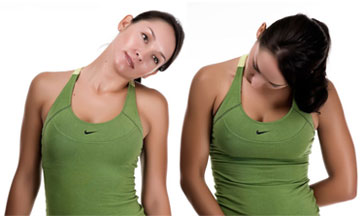
- Lateral neck stretch
This stretching is used for the upper traps, where there is more tension. Just sit or stand in a chair with good posture (shoulders should be at back and head should be in a neutral position). Bring your left ear sideways towards your left shoulder and Keep the right shoulder relaxed. To increase the intensity of the stretch, you can anchor your right hand on the bottom of your chair or you can also extend your right arm out to the side.
Keep your upper body relaxed and pain-free and Hold for 30 or more seconds for 2-3 sets. Then, change directions.
- Neck Rotation Stretch
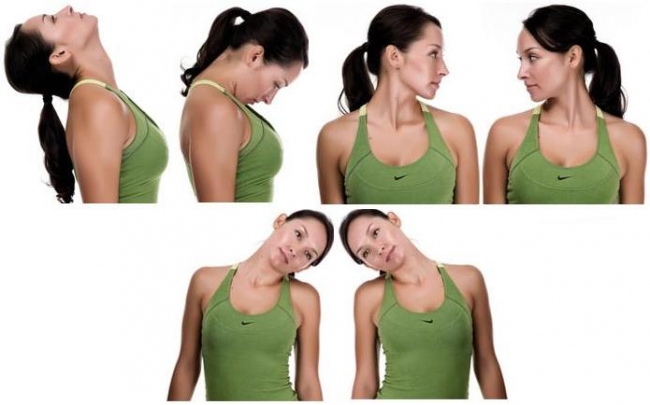
While doing stretch pick some of the deeper sore spots in the cervical spine. Sit in a chair and with a good posture. Make sure that the neck should be in a neutral position (slightly tucked) before starting to prevent any deformities. after that, rotate your head to the right as you see over your right shoulder. When you can’t go any further, apply gentle pressure and hold and place your left hand on your cheek. Never force this stretch and always keep the neck in the neutral position.
- Exaggerated nod
The exaggerated nod counterbalances the downward and towards head position by pulling your shoulders down and back and increasing neck mobility.
How to do it:
- Sit at your desk or relax your shoulder while standing. With your mouth closed and make sure your teeth touching but not clenching and look up to the ceiling.
- Stop here and open your mouth and relax your jaw. Now see if you can bring your head further back up to an inch or two.
- Keep your head fixed there and bring your lower part of the jaw to your upper part of the jaw, closing your mouth. You should feel a stretch in the front area of your neck.
2. Downward-Facing Dog

Downward-Facing Dog is useful for opening the front chest wall and shoulders. which are often rounded and stiffened from overuse tech usage. This is all about upper-body strength, which means if you do not have shoulder strength you might compensate by bringing your shoulders up to your ears. If you notice yourself doing this, actively put your shoulder blades down your back side, which will create space in your neck.
How to do it:
- Begin on all fours. Push your toes and lift your hips up, reaching your hip bones toward the ceiling.
- Reach your heels back toward the mat, but do not let them put on the ground.
- Drop your head down so that your neck will become long. As you stay here, make sure that your wrist should stay parallel to the front side of the mat.
- To reduce the pressure on your wrists, press on the knuckles of your forefingers and thumbs.
- take at least three deep breaths and then release.
3. Cat-Cow
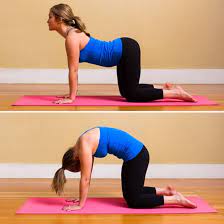
Your core and pelvis should drive the Cat-Cow flow As you inhale you create an anterior tilt to the pelvis so that your tailbone should face the ceiling, and while you exhale you create a posterior tilt so that your tailbone is facing the ground. This movement also helps increase spinal awareness, which is very important for perfect posture.
How to do it:
- Start on all fours with your shoulders should be over your wrists, your hips store over your knees, and the top part of your feet pressed into the ground lengthen your head down to your tailbone to see a few inches in front of your fingers.
- To begin the ‘cat’ phase, as you exhale use your abs to curl your spine towards the ceiling while tucking in your tailbone. pull your neck and allow your chin to reach down and in, toward your chest, so you can see your ears come down by your biceps.
- To begin the ‘cow’ phase, as you inhale swoop and scoop your pelvis so your belly drops down to the floor. Widen across your shoulder blades, keep your shoulders away from your ears, and lift your chin up and chest to look up towards the sky.
- Cycle through Cat-Cow a few times, keeping stress and pressure out of the head and neck.
4. Bow pose
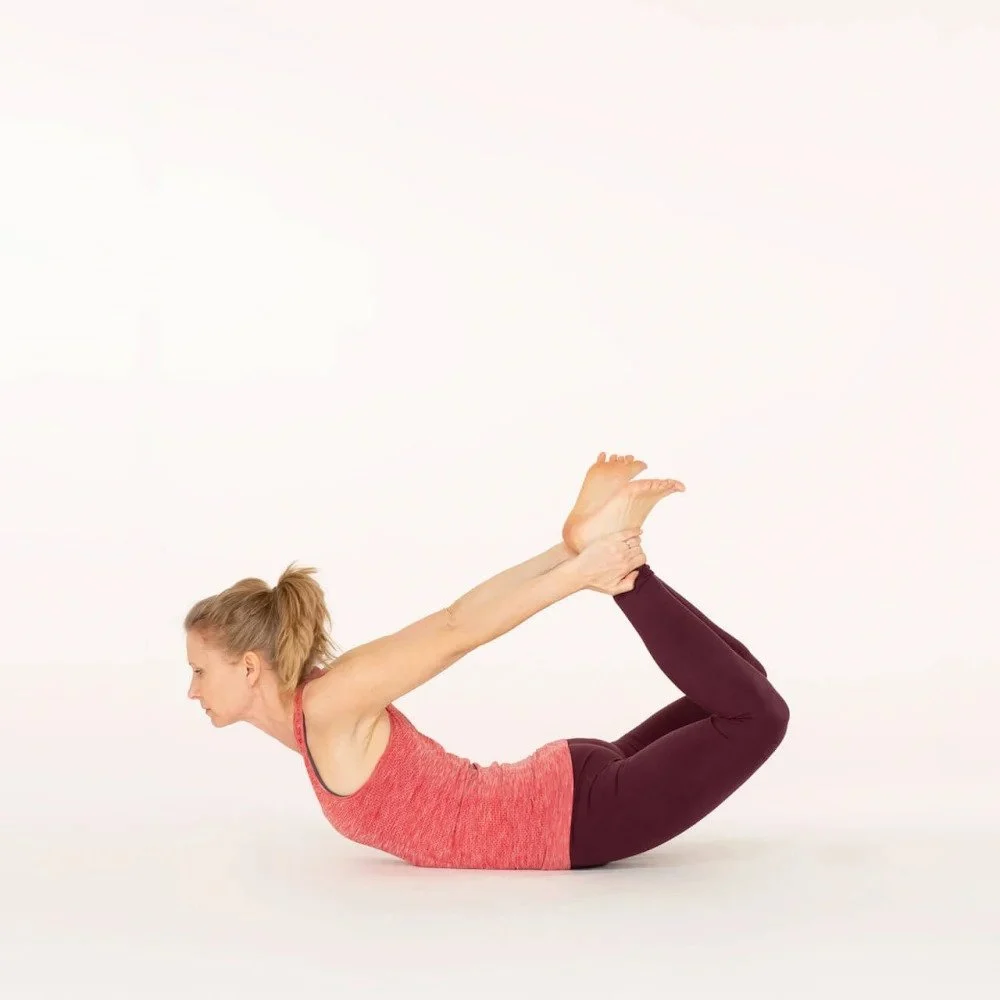
It helps to counteract slouched shoulders by stretching the pectoral muscles and strengthening upper back muscles.
- Lie flat on your abdomen with your chin on the ground and your hand resting on either side of you.
- Bend your knees and bring your heels as close to your glutes as you can. Reach backward with both palms and grasp hold of your outer ankles. As you inhale, raise your heels up toward the sky so that your chest, thighs, and upper torso elevate off the floor.
- To intensify the stretch, try to elevate your heels higher while keeping your tailbone pressed into the floor. Look forward and move your shoulders away from your ears.
- Hold this position for 10 breaths. Release an exhale by slowly lowering your thighs, and then the rest of your body, to the floor.
- Chin tuck
It is a simple exercise you can do at your work, at your home. This simple stretch will help increase spinal awareness while strengthening the neck muscles to help pull your head back into alignment, says Cappo.
5. Chin tuck

How to do it:
- Sit up straight in a chair and keep your chin parallel to the ground. Without leaning your head in any direction, gently draw out your head and chin back, like you’re making a double chin. Be careful not to stick your head back. You should feel a stretch throughout the back of the neck.
- Now imagine there’s a string pulling your head upward like a puppet and actively elongating your neck. Actively push the base of your head away from the base of your neck. Keep your jawbone relaxed and hold this position for 3 deep breaths.
- Release your chin forward. Repeat 10 times.
Effleurage massage to relax the muscles
How to do it?
Effleurage is a type of massage technique that helps to relax the muscle and increase blood circulation and lymph flow. Effleurage is a most commonly used massage technique performed in such a way that it does not try to move the muscles located just under the skin, that’s why it is also called gliding.
How to Prevent Text Neck?
Following are a few preventive steps that may helpful:
- Change position how to hold the phone
“Bring your phone to eye level so your head is not slouched forward or extreme. Keep a neutral spine so your ear is in line with your shoulders,” says Cupp. This will prevent forward-head posture. - Take phone breaks
Frequent breaks from the phone can help, even if it’s just two to three minutes every hour. “Getting rid of the pattern of looking down to use phone or any work is mostly given advise to prevent text neck, but that’s highly discomforting for most people. So instead of that, I recommend that people try to consciously take breaks from their phones,” says Goodrich. “Set reminders on your phone or computer, or use a sticky note. This small awareness can make a huge difference.” - Try the Text Neck app
There’s a Text Neck app for Android that offers “instant real-time feedback” about your body posture (indicated by a green or red light). There’s also an optional beep reminder to tell you when you’ve lapsed back into bad habits. - If you experience prolonged pain, find out the cause
If you experience prolonged pain recommend getting adjusted, which helps relieve pain and address the structural issues that text neck creates over time. And they might be onto something. A 2007 review trusted Source pointed to chiropractic care as one of the major nonpharmacological interventions considered effective for acute and chronic neck and back pain. - Do 10 minutes of yoga
The better way to treat and prevent neck and back pain is yoga, Goodrich says. The reason behind it helps improve movement patterns, increases body awareness, and incorporates breath work. Neck pain is caused by a muscular imbalance, such as tight rhomboids, but daily yoga sessions can help correct those differences. Doing the exercises mentioned above or 10 minutes a day of yoga, can make a difference in text neck condition.

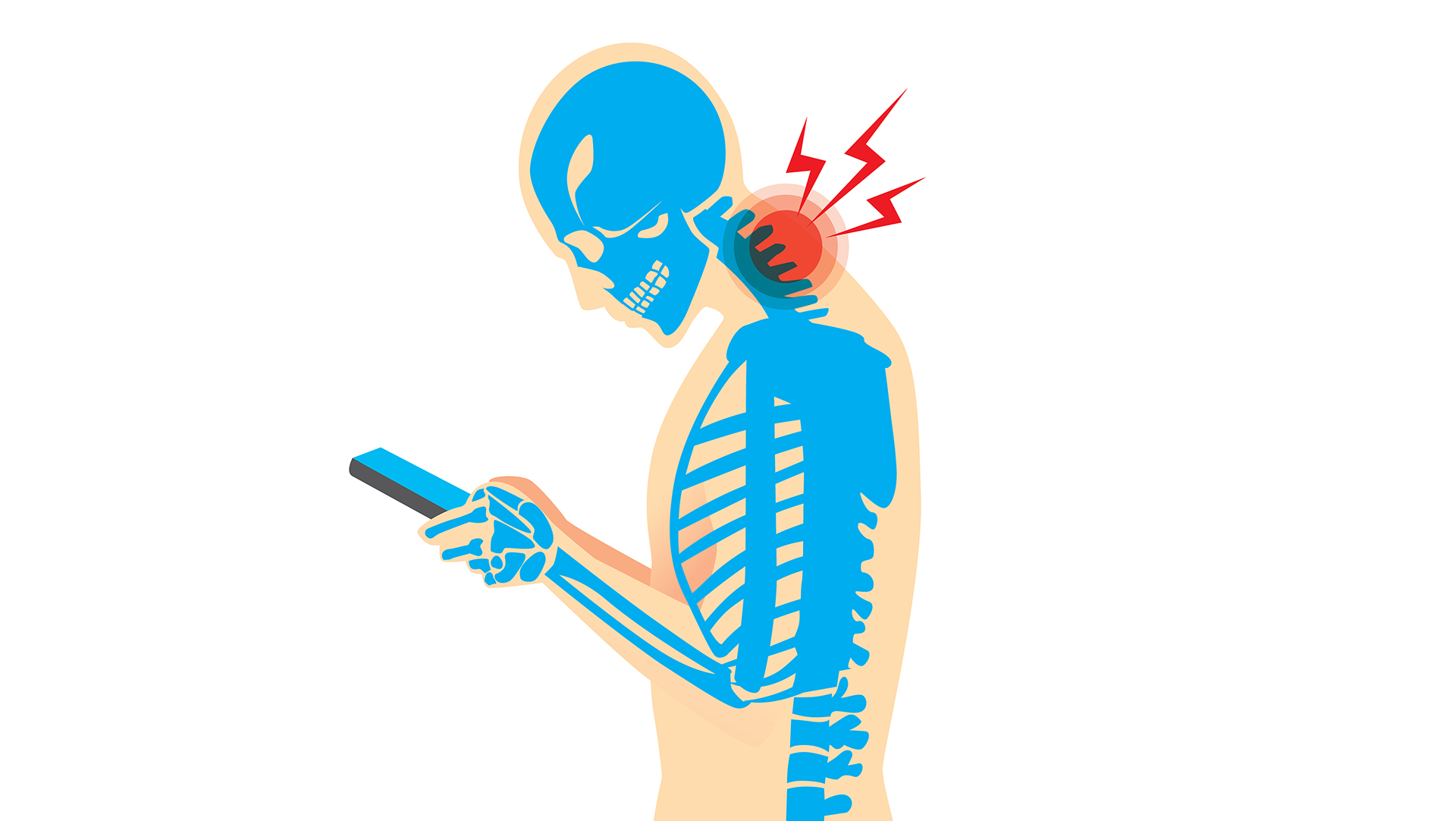
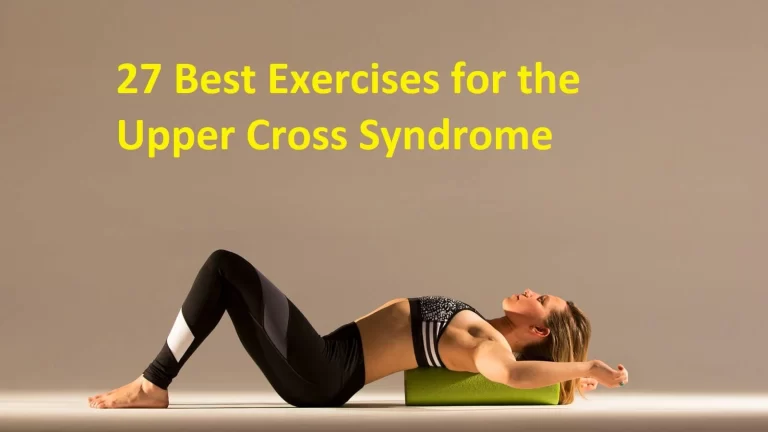


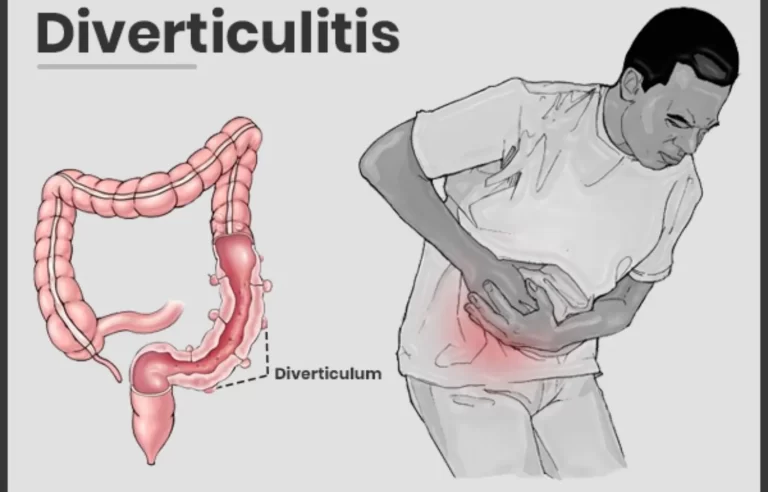
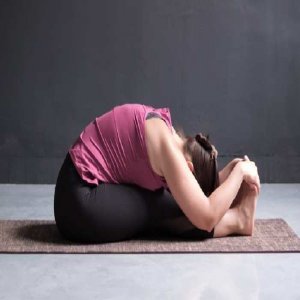
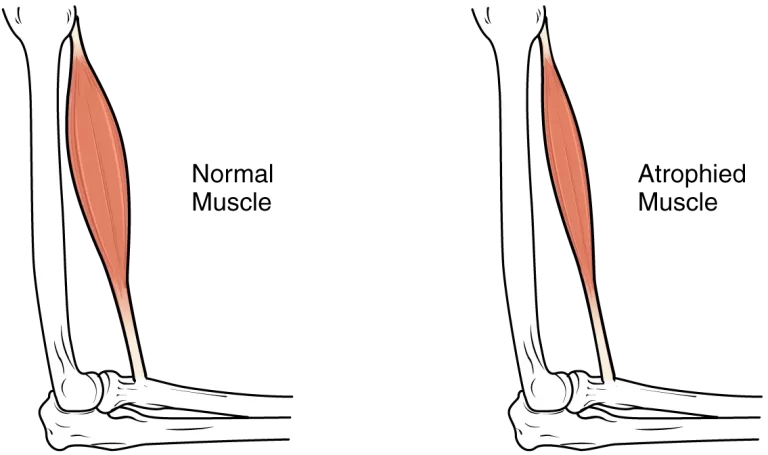
Wonderful
Very useful ☺️